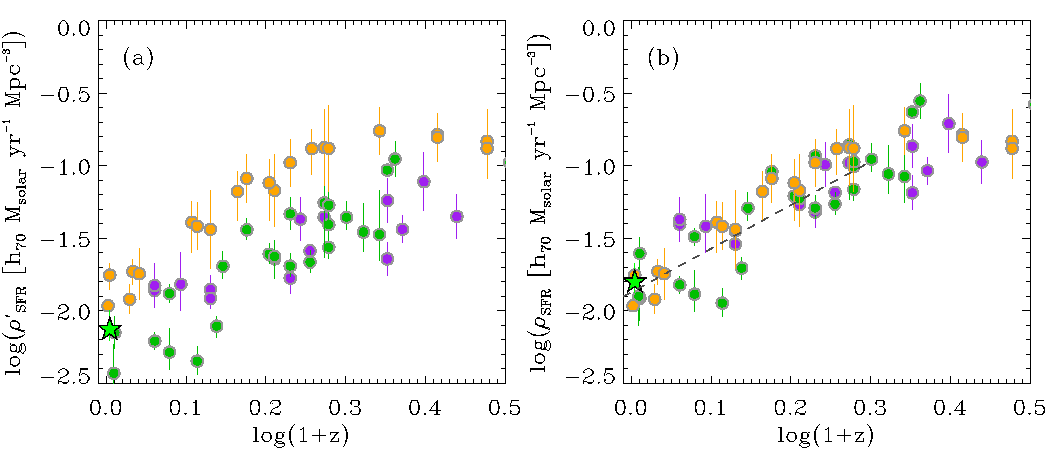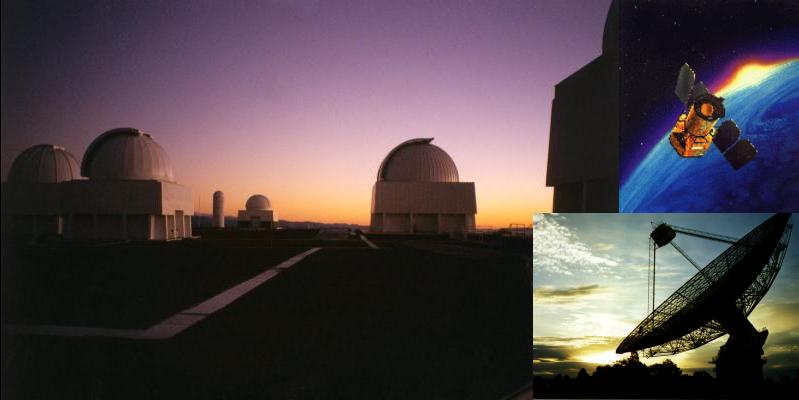The star formation rate density has
decreased by an order of magnitude since z~2, and this evolution
constrains all models of galaxy evolution. However, other
estimates of the local star formation rate density suffer from
significant sample biases. The selection method used by SINGG,
focusing on H
I mass instead of luminosity, allows us to derive luminosity densities without suffering from most of the optical biases common to other surveys. As we
observed each SINGG galaxy in R and H&alpha bands, our
corresponding
luminosity densities are:
l'R = (4.4 +/- 0.7) x 1037 h70
erg s-1
Å-1 Mpc-3
l'H&alpha = (9.4 +/- 1.8) x 1038 h70
erg s-1 Mpc-3
before correction for internal extinction. The local star
formation rate density, after a mean internal extinction correction of
0.82 mag, is:
log(&rhoSFR [Msolar yr-1 Mpc-3])
= -1.80 +0.13/-0.07 (random) +/- 0.03 (systematic) + log(h70)
To compare to the values from other surveys:

Star formation rate density, as a function of redshift, (a) before
and (b) after corrections for internal extinction are applied. Green
circles are visual-wavelength emission line surveys, purple circles are
UV surveys, and orange circles are IR or sub-mm surveys. The star
symbol at z~0 is the SINGG value.
While the corrected values appear to correlate well, this is somewhat misleading; the SINGG extinction correction (0.82 mag) is smaller than that of other surveys, and a more detailed comparison (see paper) finds that other surveys include few low-luminosity galaxies and bias heavily towards "starburst" galaxies.
Paper reference: Hanish et al. 2006, "The Survey for Ionization in
Neutral Gas Galaxies: II. The Star Formation Rate Density of the Local Universe", ApJ, in
press, astro-ph/0604442.


